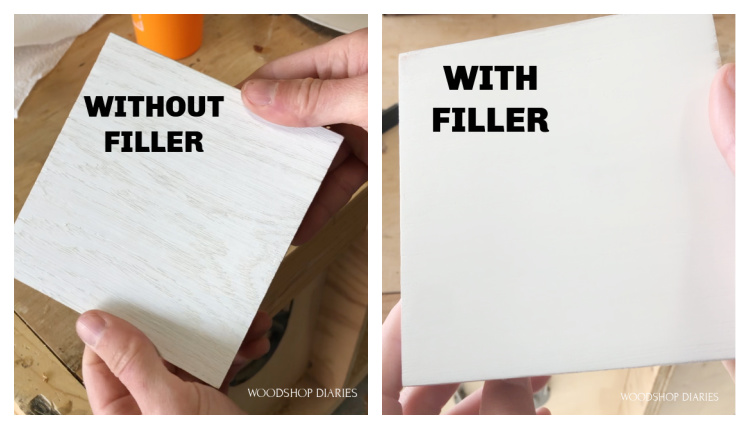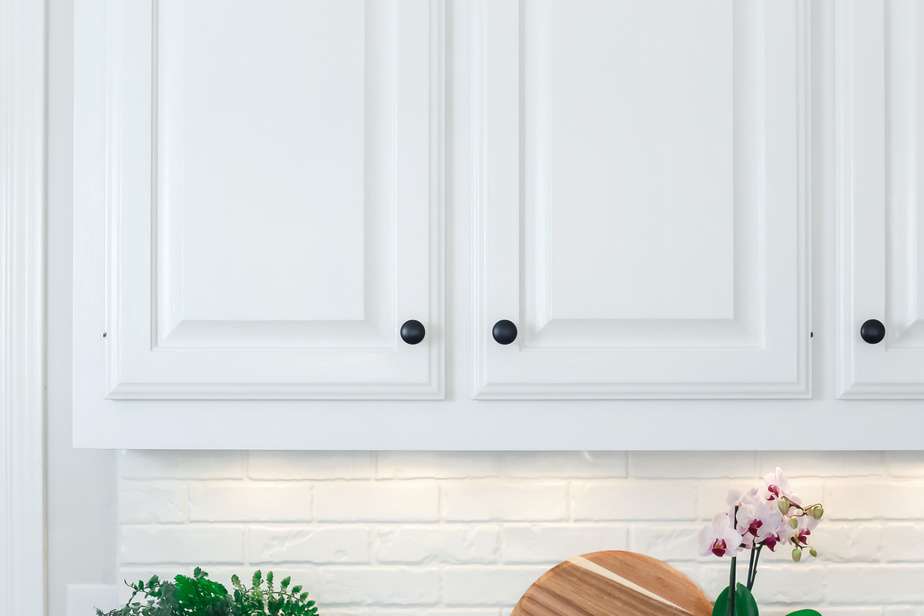Understanding Oak Cabinet Wood Filler Needs: Best Wood Filler For Oak Cabinets

Oak cabinets, with their timeless beauty and durability, often become cherished family heirlooms. However, over time, these cabinets may encounter damage, requiring the use of wood filler for restoration. Understanding the specific needs of oak wood and the types of damage it is prone to is crucial for selecting the right filler.
Oak Wood Properties and Filler Selection
Oak is a hard and dense wood with a distinct grain pattern. Its hardness makes it resistant to scratches and dents, but it can still be susceptible to these types of damage. Additionally, oak’s grain pattern, characterized by its prominent, interwoven lines, presents a unique challenge for wood filler application. The filler must be able to seamlessly blend with the existing grain, ensuring a natural and invisible repair.
Types of Damage Common to Oak Cabinets
Oak cabinets are susceptible to various types of damage, including:
- Scratches: These are common, especially on surfaces that receive frequent use. They can range from shallow surface scratches to deeper gouges.
- Dents: These can be caused by impact, often leaving an indentation in the wood’s surface.
- Holes: These can be created by nails, screws, or other objects, leaving a void in the wood.
- Cracks: These can occur due to changes in humidity or temperature, causing the wood to expand or contract, leading to cracks or splits.
Color Matching for Oak Cabinet Wood Filler
Color matching is crucial for wood filler in oak cabinets. The filler should closely resemble the existing color and grain of the oak, ensuring a seamless repair that blends seamlessly with the surrounding wood. This is particularly important for visible areas of the cabinet, such as the doors and drawer fronts.
It’s best to use a wood filler that is specifically designed for oak or a similar wood species, as these fillers are often formulated to match the color and grain of the wood.
Popular Wood Filler Types for Oak Cabinets

Choosing the right wood filler for your oak cabinets is crucial for achieving a seamless and durable repair. The type of filler you select will depend on the size and location of the damage, the desired finish, and your budget. Here’s a breakdown of popular wood filler types and their suitability for oak.
Epoxy Wood Filler
Epoxy wood filler is a two-part compound that mixes together to create a strong, durable filler. It’s known for its exceptional adhesion to wood, making it ideal for filling deep cracks, holes, and other significant damage. Epoxy wood filler can be sanded and painted over, allowing for a smooth and seamless finish.
Application Process:
1. Prepare the Surface: Clean the area to be filled with a wood cleaner or sandpaper to remove dust, debris, and loose material.
2. Mix the Epoxy: Follow the manufacturer’s instructions for mixing the epoxy resin and hardener. Ensure a thorough mix to ensure proper curing.
3. Apply the Filler: Use a putty knife or spatula to apply the mixed epoxy to the damaged area. Press it firmly into the void and ensure it’s flush with the surrounding wood.
4. Cure Time: Allow the epoxy to cure completely as per the manufacturer’s instructions, typically 24-48 hours.
5. Sand and Finish: Once cured, sand the epoxy smooth using progressively finer grits of sandpaper. Apply a wood finish to match the surrounding area.
Wood Putty
Wood putty is a readily available and versatile filler that comes in various colors to match different wood species. It’s a water-based, paste-like filler that’s easy to apply and dries quickly. Wood putty is ideal for filling small cracks, nail holes, and minor imperfections in oak cabinets.
Application Process:
1. Prepare the Surface: Clean the area to be filled with a damp cloth or sandpaper to remove dust and debris.
2. Apply the Putty: Use a putty knife to apply the putty to the damaged area. Press it firmly into the void and ensure it’s flush with the surrounding wood.
3. Drying Time: Allow the putty to dry completely, typically 30-60 minutes.
4. Sand and Finish: Once dry, sand the putty smooth using progressively finer grits of sandpaper. Apply a wood finish to match the surrounding area.
Paste Wood Filler
Paste wood filler is a thick, paste-like filler that’s often used for larger repairs and filling significant gaps. It’s available in various colors and wood species, making it easy to match existing cabinets. Paste wood filler is known for its strong adhesion, durability, and ability to be sanded smooth.
Application Process:
1. Prepare the Surface: Clean the area to be filled with a wood cleaner or sandpaper to remove dust, debris, and loose material.
2. Apply the Filler: Use a putty knife or spatula to apply the paste wood filler to the damaged area. Press it firmly into the void and ensure it’s flush with the surrounding wood.
3. Drying Time: Allow the filler to dry completely, typically 24-48 hours.
4. Sand and Finish: Once dry, sand the filler smooth using progressively finer grits of sandpaper. Apply a wood finish to match the surrounding area.
Wood Filler Comparison Table, Best wood filler for oak cabinets
| Filler Type | Pros | Cons |
|—|—|—|
| Epoxy Wood Filler | Exceptional adhesion, durability, suitable for deep repairs, can be sanded and painted | Two-part mixture, longer curing time, can be more expensive |
| Wood Putty | Easy to apply, dries quickly, available in various colors, cost-effective | Less durable than epoxy, not suitable for deep repairs |
| Paste Wood Filler | Strong adhesion, durable, can be sanded smooth, available in various colors | Can be difficult to apply, longer drying time |
Choosing the Best Wood Filler for Specific Repairs

Selecting the right wood filler for your oak cabinets depends on the type of damage and the desired outcome. Different fillers excel in specific situations, ensuring a seamless and durable repair.
Matching Filler Types to Repair Needs
The type of damage dictates the best wood filler choice. Here’s a guide to help you choose wisely:
- Small Scratches and Imperfections: For minor blemishes, a wax-based filler is ideal. It’s easy to apply, dries quickly, and blends seamlessly with the surrounding wood. This option is perfect for scratches, minor dents, and small gaps.
- Deep Gouges and Holes: For deeper damage, a two-part epoxy wood filler is a robust solution. It’s strong, durable, and can be sanded smooth for a flawless finish. This type is perfect for filling deep gouges, knot holes, and cracks.
- Large Areas and Structural Repairs: When dealing with extensive damage, consider a wood filler that is specifically designed for structural repairs. These fillers are often formulated with wood fibers, providing strength and stability to the repaired area. This is particularly helpful for filling large gaps, repairing broken pieces, and reinforcing weakened sections.
Applying Wood Filler to Oak Cabinets
Applying wood filler to oak cabinets requires a few key steps:
- Prepare the Surface: Clean the damaged area with a damp cloth and let it dry completely. Remove any loose wood fibers or debris with sandpaper.
- Apply the Filler: Use a putty knife or a small spatula to apply the wood filler to the damaged area. Press it firmly into the void and smooth out the surface. Ensure the filler is level with the surrounding wood.
- Allow Drying Time: Refer to the manufacturer’s instructions for the drying time of the specific wood filler you’re using. Allow the filler to dry completely before proceeding to the next step.
- Sanding and Finishing: Once the filler is dry, use fine-grit sandpaper to smooth out any imperfections. Sand gently to avoid damaging the surrounding wood. After sanding, apply a stain and finish to match the existing cabinet color. This will ensure a seamless and uniform look.
Best wood filler for oak cabinets – Choosing the right wood filler for oak cabinets is crucial to achieving a seamless finish. You’ll want to consider the type of damage you’re repairing and the color match. While you’re working on your cabinets, you might also want to think about updating your lighting.
A well-chosen best ceiling light for small bedroom can make a big difference in the overall ambiance of the space. Once your cabinets are repaired and your lighting is perfect, you’ll be ready to enjoy the beauty of your updated room.
Choosing the best wood filler for oak cabinets depends on the severity of the damage and the desired finish. For a seamless repair, consider using a wood filler that matches the grain and color of your oak. If you’re looking for inspiration for your overall design, a grey wood floor bedroom can provide a contemporary backdrop that complements the warmth of oak cabinets beautifully.
Once you’ve filled any imperfections, you can stain and seal your cabinets to achieve the perfect look for your space.
